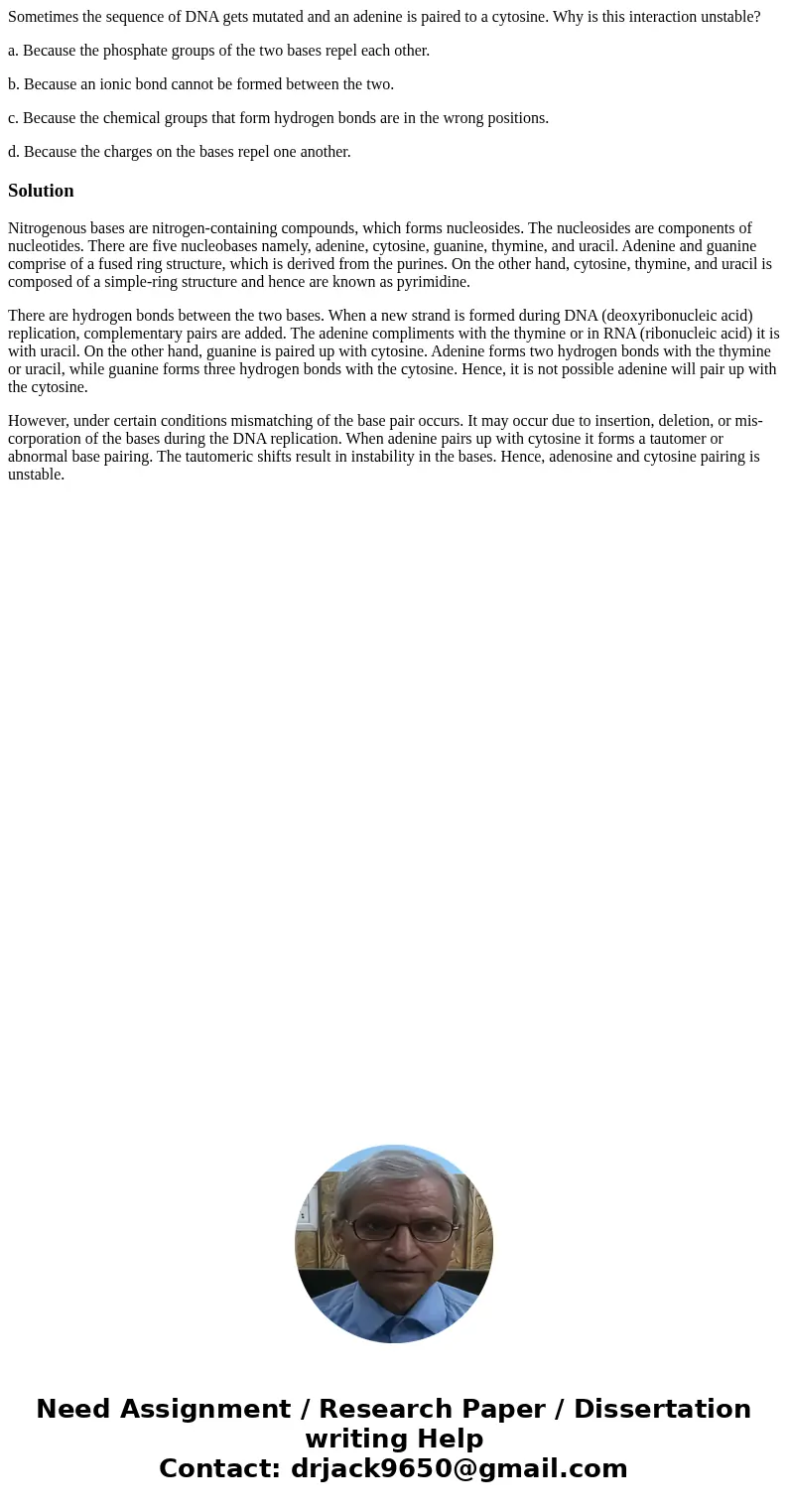Sometimes the sequence of DNA gets mutated and an adenine is
Sometimes the sequence of DNA gets mutated and an adenine is paired to a cytosine. Why is this interaction unstable?
a. Because the phosphate groups of the two bases repel each other.
b. Because an ionic bond cannot be formed between the two.
c. Because the chemical groups that form hydrogen bonds are in the wrong positions.
d. Because the charges on the bases repel one another.
Solution
Nitrogenous bases are nitrogen-containing compounds, which forms nucleosides. The nucleosides are components of nucleotides. There are five nucleobases namely, adenine, cytosine, guanine, thymine, and uracil. Adenine and guanine comprise of a fused ring structure, which is derived from the purines. On the other hand, cytosine, thymine, and uracil is composed of a simple-ring structure and hence are known as pyrimidine.
There are hydrogen bonds between the two bases. When a new strand is formed during DNA (deoxyribonucleic acid) replication, complementary pairs are added. The adenine compliments with the thymine or in RNA (ribonucleic acid) it is with uracil. On the other hand, guanine is paired up with cytosine. Adenine forms two hydrogen bonds with the thymine or uracil, while guanine forms three hydrogen bonds with the cytosine. Hence, it is not possible adenine will pair up with the cytosine.
However, under certain conditions mismatching of the base pair occurs. It may occur due to insertion, deletion, or mis-corporation of the bases during the DNA replication. When adenine pairs up with cytosine it forms a tautomer or abnormal base pairing. The tautomeric shifts result in instability in the bases. Hence, adenosine and cytosine pairing is unstable.

 Homework Sourse
Homework Sourse